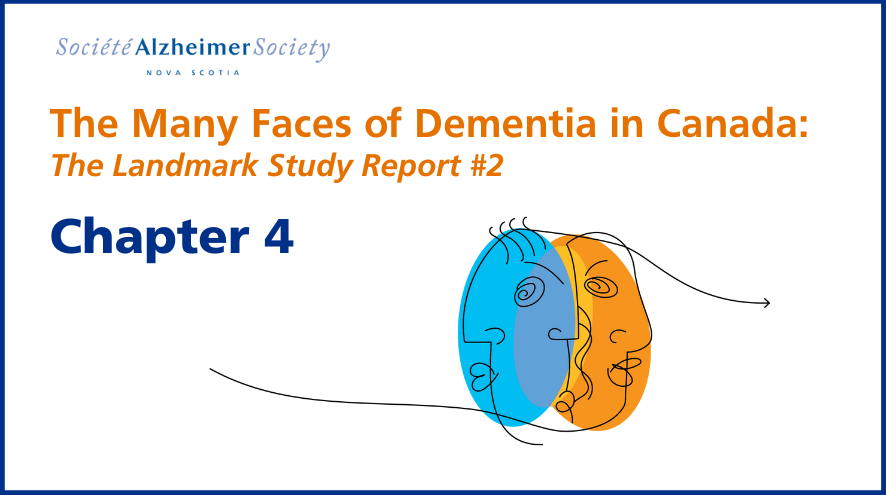Chapter 4: Sex & Gender Differences in Dementia
Learn more about Chapter 4 of the second volume of the Landmark Study, the Many Faces of Dementia in Canada, a report by the Alzheimer Society of Canada.

There are many distinctions in dementia that matter when it comes to sex and gender.
Both sex and gender can shape a person’s dementia experience, from prior to onset, through treatment and beyond. There are sex and gender differences in the number of individuals affected by dementia, the risk factors for developing the condition, how symptoms are expressed, and the needs for care and caregiving.
When seeking to understand why these differences occur, it is important to acknowledge that both biological and social factors play a strong role. Researchers have come to recognize that both sex and gender are important characteristics to consider when examining dementia outcomes and care needs.
Definitions of sex and gender used by Statistics Canada as of 2021:
“Gender refers to an individual’s personal and social identity as a man, woman or non-binary person (a person who is not exclusively a man or a woman). Gender includes the following concepts: gender identity, which refers to the gender that a person feels internally and individually; gender expression, which refers to the way a person presents their gender, regardless of their gender identity, through body language, aesthetic choices or accessories (e.g., clothes, hairstyle and makeup), which may have traditionally been associated with a specific gender. A person’s gender may differ from their sex at birth, and from what is indicated on their current identification or legal documents such as their birth certificate, passport or driver’s licence. A person’s gender may change over time. Some people may not identify with a specific gender” (Statistics Canada, 2021a).
“Sex at birth refers to sex assigned at birth. Sex at birth is typically assigned based on a person’s reproductive system and other physical characteristics. Sex at birth may also be understood as the sex recorded at a person’s birth, for example, what was recorded on their birth certificate” (Statistics Canada, 2021b).
This chapter and the data in it reflect the fact that there are slightly different terms of reference for sex and gender, even at the national level, and that research and language continues to evolve to better reflect the realities and lived experience related to gender and sex.
Given this context, this chapter outlines some of the sex and gender differences in dementia. This will be followed by some of the findings related to sex at birth from the Landmark Study (no gender data was available for those study analyses).
Read this chapter here.
Find a summarized fact sheet on this chapter here.
